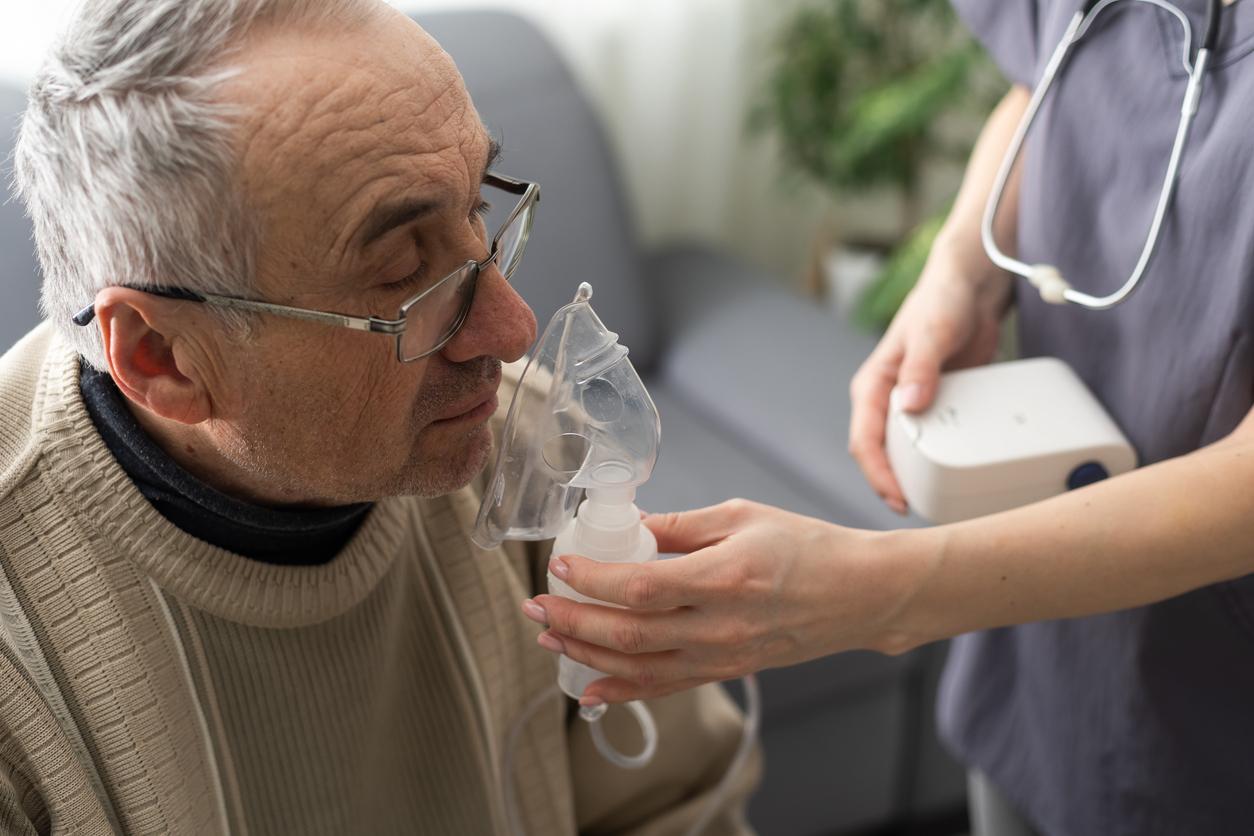Researchers have discovered why the mucus of patients with chronic obstructive pulmonary disease (COPD) is so viscous. Eventually, their findings could pave the way for a potential treatment.

- Patients with COPD gradually choke on their mucus, which they produce in excessive quantities.
- A surplus of proteins called TFF could be the cause of the increased viscosity of patients’ mucus.
- Researchers want to develop drugs to reduce the viscosity of mucus in order to clear the lungs of patients.
Chronic obstructive pulmonary disease (COPD) is a lung infection characterized by a persistent decrease in inspired gas flow. According to WHO, symptoms progressively worsen with shortness of breath on exertion even at rest. The disease is often caused by tobacco smoke, due to active or passive smoking and “tends to be underdiagnosed and can be life-threatening”, warns the WHO. The patients gradually choke on their mucus, which they produce in too large quantities. Recently, researchers discovered why the mucus of these patients was so thick. Their work, published in the journal NatureCommunicationsopen the way to a potential treatment to cure this currently incurable disease.
The cells of the respiratory mucosa continuously produce mucus which forms a protective layer. Mucus is mostly made up of very long proteins, mucins, coated with glycans, a type of sugar molecule, but it also contains a small amount of TFF, loop-forming proteins. “TFFs have long been known to make mucus more viscous (thicker), and this thickening has been postulated to occur in respiratory diseases. However, until now we did not fully understand how TFF achieves this”explains Ethan Goddard-Borger, associate professor at the Walter and Eliza Hall Institute (Melbourne, Australia), who led the study.
In fact, to prove that too many TFFs are indeed the cause of the increased viscosity of patients’ mucus, it would be necessary to be able to inactivate their action in a specific way. If the operation restores fluidity to the mucus, it is proof that TFF does cause thick secretions. During their study, Ethan Goddard-Borger showed that “TFF ‘staple’ mucin filaments by binding to their glycans”. Thereby, the more staples, the denser the mesh and the thicker the mucus becomes.
A significant advance in the understanding of mucus
The researchers also noticed that the bacteria helicobacter pylori, which causes ulcers, also had glycans similar to those of our mucins. However, the gastric mucus is the only one to be rich in TFF and they can therefore cling to it. “We assume that bacteria evolved this mechanism to help them colonize gastric mucus.”explains Professor Goddard-Borger to Science and Future.
Understanding what TFFs bind to and how they do so is an important advance in understanding mucus and how it works in the respiratory, gastrointestinal and reproductive tracts, the researchers say. Now, they want to prove that “TFF antagonists may improve mucus clearance and lung function in preclinical models [animaux, NDLR] of COPD”announces Professor Goddard-Borger to Science and Future.
The next step will be to inhibit the links created between the TFFs and the mucin strands, knowing that this success would eventually lead to new therapies in the treatment of respiratory diseases, they hope. “We seek to develop innovative approaches to reduce mucus viscosity to help remove excess mucus from the lungs of patients with chronic respiratory diseases, details Goddard-Borger in the article. A healthy amount of mucus is very important for capturing and eliminating potential threats to the lungs, such as dust particles, dead cells and bacteria, which is why we are not looking to completely eliminate mucus”he explains.
“A significant influence on the quality and life expectancy” of patients
The next step is to work with commercial collaborators to advance our vision to develop new mucolytic drugs that can more effectively clear mucus from the airways,” adds the teacher. “It would not reverse disease progression, but may help maintain or improve lung function to improve quality and life expectancy.”he continues to Science and Future.
Beyond COPD, “achieving this goal could have a significant influence on the quality of life and life expectancy of people with debilitating respiratory diseases,” such as asthma, cystic fibrosis, idiopathic pulmonary fibrosis or bronchial dilation.
More and more COPD patients around the world
According to a study published in November in The European Respiratory Journal, the number of patients diagnosed with COPD continues to increase throughout the world. According to WHO data, 175 million people were affected by this disease in 2015. On the other hand, the mortality rate due to this disease decreased by 12% between 2000 and 2015.
“The data suggests that the proportion of COPD patients who die prematurely due to the disease is decreasing overall, which is very encouraging. This means that people may be less exposed to risk factors now that the disease is managed more effectively, therefore analyzed the authors of the study. Nevertheless“although the death rate from COPD may decline over time, this decline is too small to compensate for the fact that more and more people are dying of COPD each year due to aging populations.”
“NOTe must continue to seek more effective treatments and ways to manage COPD. We also need to reduce the stigma surrounding the disease and raise awareness about risk factors other than smoking – especially the dangers of damaging our lungs as children.” Hopefully, this Australian study can change that.

.
















